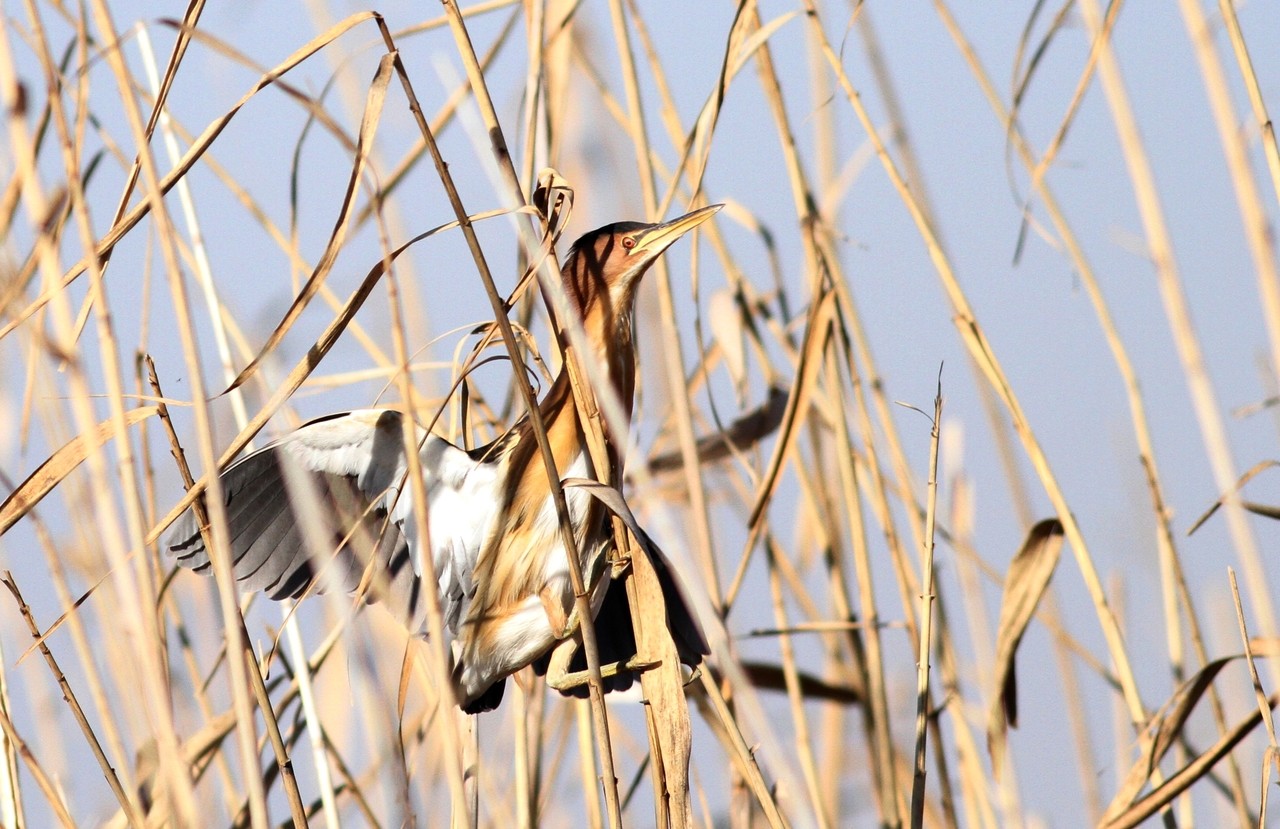Little Bittern
A species of Small bitterns, Also known as Old World Little Bittern Scientific name : Ixobrychus minutus Genus : Small bitterns
Little Bittern, A species of Small bitterns
Also known as:
Old World Little Bittern
Botanical name: Ixobrychus minutus
Genus: Small bitterns
Content
Description General Info
Description
The little bittern has a length of 33–38 centimetres (13–15 in) and a wing span of 52–58 centimetres (20–23 in). It is the smallest of the breeding herons of Europe and is characterised by its tiny size, long and sharp bull and thick neck. The male's are distinctively patterned and both sexes show pale forewing panels. The males have black with a faint green sheen on the crown, nape, back, tail and scapulars. The underparts are pale buff and the wing has a pinkish buff oval shaped panel which contrasts with the otherwise black wings and is formed by the inner wing coverts. The underwing is completely whiteish in colour. The female is duller than the male and has brownish black upperparts with paler feather margins visible at close range. The underparts of the female are not as clean as those of the male and are streaked with dark buff and brown. The female's wing panel is less obvious than the male's. The juveniles are duller and more rufous than the females and are more heavily streaked on both their upperparts and underparts, including their wing coverts. 
Size
36 cm
Colors
Brown
Black
Yellow
Bronze
White
Life Expectancy
5 years
Nest Placement
Ground
Feeding Habits
Little Bittern primarily consumes fish, amphibians, and insects, often using stealth to hunt within or along the edges of reedbeds.
Habitat
Little Bittern predominantly inhabits freshwater wetlands, thriving in environments rich with dense aquatic vegetation such as reeds, rushes, and bulrushes. The species is adapted to well-vegetated marshes, swamps, and areas along lakes and rivers, often with additional shrub or tree cover for nesting. Geographically, little Bittern occupies a range of terrains mainly at elevations below 500 m, extending to 2400 m in some areas, and occasionally utilizes open or urban waters, and drier habitats during migration periods.
Dite type
Piscivorous
General Info
Feeding Habits
Bird food type
Behavior
The little bittern is crepuscular, skulking and normally solitary. It feeds on fishes, amphibians and insects which are caught within reedbeds or at their edges by the bird slowly stalking the prey. The male claims a territory in the Spring, advertising his presence with a deep barking or croaking call and the monogamous pair remain together for at least one breeding season. Eggs are laid in a nest situated in dense reedbeds, rushes or bushes above the water from the middle of May and there is a single brood which is normally 5-6 eggs. These are incubated for 17–19 days and the chicks are fledged after 25–30 days. In Europe the little bittern is a migratory species, crossing the Mediterranean from Africa in the early Spring and arriving in their breeding wetlands from mid April onwards. The return to Africa occurs in August and September and there are normally only a few juveniles left in Europe by October. The European breeders migrate as far south as the Eastern Cape and Transvaal. 
Distribution Area
The little bittern is native to the Old World, breeding in Africa, central and southern Europe, western and southern Asia, and Madagascar. Birds from temperate regions in Europe and western Asia are migratory, wintering in Africa and further south in Asia, while those nesting in the tropics are sedentary. It is rare north of its breeding range. In Britain there were intermittent reports of breeding in the nineteenth century, and again in 1946 and 1957, but none of these records were proven. The first proven British breeding record is from Yorkshire in 1984, and the second from the Avalon Marshes in Somerset in 2010, by 2017 this species had been present in this area for nine consecutive years. 
Species Status
Not globally threatened.
Scientific Classification
Phylum
Chordates Class
Birds Order
Pelicans and Relatives Family
Herons Genus
Small bitterns Species
Little Bittern 